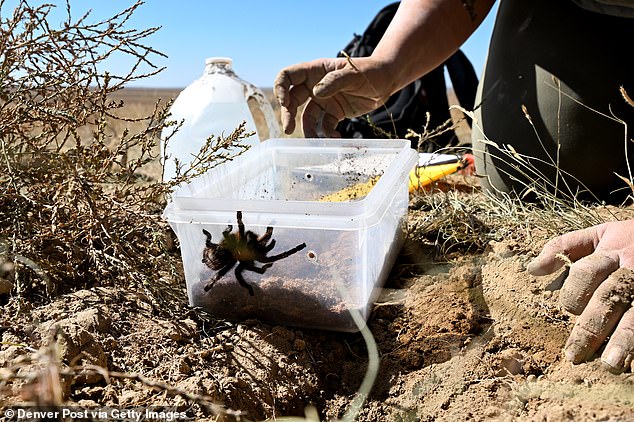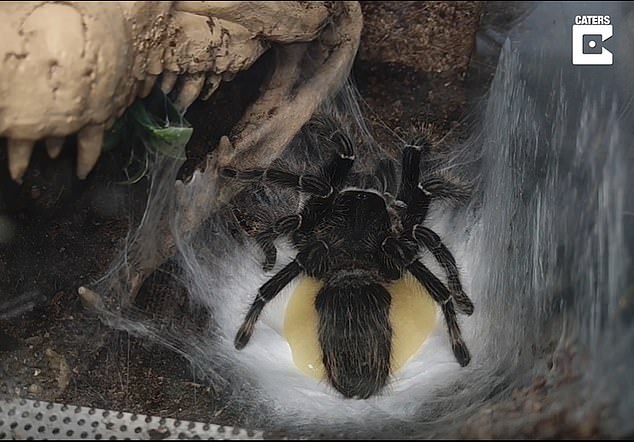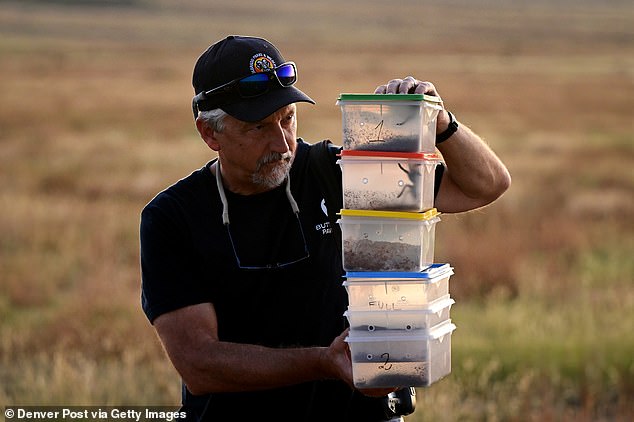Thousands of tarantulas on the move in three US states amid massive search for a mate
Residents of Colorado, Kansas and New Mexico are advised to be on the lookout for venomous male tarantulas, which will be spreading from now until October.
Some spider and wildlife experts call it a “mating drive,” because males can travel as far as 20 miles in search of an adult female.
“They’re just looking for love,” says Dr. Lauren Davidson, an entomologist and spider expert from Houston, Texas. “Let them find a girlfriend.”
Dr. Davidson is one of many scientists who hopes that public fear of spiders will not hinder their ecologically valuable efforts to reproduce more of their species.
The Lone Star State’s confrontation with these tarantulas in heat ended just this month. The female tarantulas are now preparing to give birth to massive broods via leaky egg sacs that can contain anywhere from 50 to 3,000 baby spiders.
Some spider and wildlife experts call it a “mate-grazing,” as male tarantulas have been known to travel as far as 20 miles in search of an adult female mate in parts of the southwestern U.S. from August to October. Above, tarantula on Copper City Road in California

Above, Colorado State University PhD candidate Jackie Billotte releases a female tarantula near her old den after making a plaster mold of the tarantula’s burrow at the Southern Plains Land Trust Heartland Ranch Nature Preserve on September 24, 2022 near Lamar, CO.
Although the American tarantula is a venomous species, it usually saves its deadly toxins for prey such as beetles, grasshoppers, small lizards, mice, and even scorpions.
People can usually withstand a bite from these tarantulas without a visit to the hospital, but that doesn’t mean the influx of male spiders is without danger.
Dr. Ritch Reading, vice president of science and conservation at the Butterfly Pavilion in Westminster, Colorado, said Fox 21 According to local news, spider enthusiasts sometimes put themselves in danger to watch or photograph these tarantulas in motion.
“When we go out there, we see people on the road, and those cars and trucks are moving pretty fast,” Dr. Reading said. “You see people on their hands and knees taking pictures — and I wouldn’t recommend that.”
“If there’s a truck coming at 65 to 70 miles per hour and you’re on your hands and knees,” he continued, “you’re probably not going to be able to avoid that vehicle.”
With that warning in mind, Dr. Reading added that several local highways in Colorado were in fact the best places for wildlife enthusiasts to witness the migration firsthand.
He noted that there is a significant population of tarantulas along Highways 109 and 350 near the La Junta area and that these tarantulas are easily visible around sunrise and sunset.
“Tarantulas use hydraulics instead of muscles to move their legs,” Dr. Reading said. “If it’s too hot or too cold, those hydraulics don’t work as well, so they don’t really move when the weather is really hot.”
“The best time to see them at this time of year is in the morning and evening when it’s a bit more temperate,” he explained.
When a male spider has found an ideal female spider to mate with, he performs a courtship dance in which he taps the female’s web with his legs.
If she is receptive, she may respond to the drumming.
Once a female tarantula has been successfully fertilized, she creates an egg sac the size of a golf ball in which she lays her eggs.

Above, a female tarantula releases a leaking egg sac containing over 1,700 offspring

Enthusiasts flock there every year to observe the male tarantulas during their mating season
She then protects the egg sac from predators until hundreds or thousands of tiny spiderlings hatch.
After mating, males usually die relatively quickly. Threats include predators, cars, and a general lack of interest in eating. In some cases, the female spider may eat the males.
According to some experts, female tarantulas live an average of 20 to 25 years.
In the wild, tarantula hawks, the largest wasp species in the US, sometimes inject these spiders with a paralyzing venom and drag them back to a burrow.
The wasp, always a female ready to lay eggs, pushes the paralyzed tarantula through the burrow’s hole and lays her eggs on top of the paralyzed spider.
When the eggs hatch a few days later, the larvae feed on the still-living tarantula.
